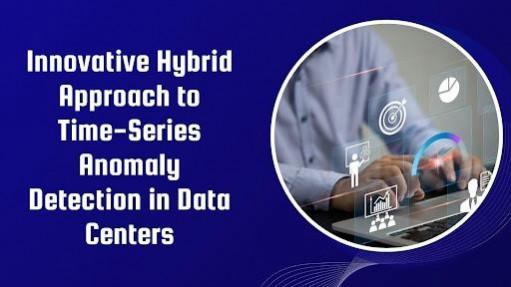
In the fast-evolving world of Data Center infrastructure, real-time anomaly detection has become essential for maintaining operational efficiency. Venkata Sampath Kumar Mutharaju, through his groundbreaking research, offers an innovative approach that combines autoencoders with Principal Component Analysis (PCA) for more efficient anomaly detection in multivariate time-series data. This hybrid method promises to enhance Data Center operations by enabling early detection of potential issues, reducing downtime, and optimizing resource usage.
Addressing Complex Challenges in Data Center Monitoring
Modern Data Centers are intricate systems with numerous interconnected components, generating vast amounts of multivariate time-series data. Traditional anomaly detection methods often struggle to capture complex temporal patterns and high-dimensional data, leading to delays in identifying critical issues. This challenge becomes especially significant as Data Center infrastructure grows in complexity, encompassing servers, network devices, and cooling systems that all generate vast streams of operational data.
Autoencoders and PCA: A Hybrid Approach for Improved Detection
Autoencoders are designed to recognize patterns in input data, encoding it into a compressed form and reconstructing it to detect anomalies. In his framework, the autoencoder learns the normal behavior of Data Center metrics like temperature, power consumption, and network traffic. However, the real innovation lies in combining autoencoders with PCA. PCA reduces the dimensionality of high-dimensional data before it is processed by the autoencoder. This combination ensures both computational efficiency and enhanced anomaly detection accuracy.
Real-World Applicability and Performance
The hybrid approach has shown promising results in real-world Data Center environments. The model has proven effective in detecting anomalies in high-dimensional data while maintaining computational efficiency. By integrating PCA for dimensional reduction, the system processes large volumes of data efficiently, making it suitable for large-scale Data Centers with continuous, high-volume data generation. Additionally, the system outperforms traditional methods in both detection accuracy and speed.
False Positive Reduction for Better Alerts
A key advantage of this hybrid approach is its ability to significantly reduce false positives. Traditional anomaly detection methods often generate numerous false alarms, leading to unnecessary maintenance or system downtime. By reducing false positives, the model ensures alerts are relevant, allowing operators to focus on actual issues. This improves operational efficiency and response times. Additionally, minimizing false positives helps reduce resource wastage, optimizing costs and enhancing system performance.
The Future of Data Center Monitoring
The demand for reliable and efficient Data Center monitoring systems continues to grow as infrastructure becomes more complex. His approach paves the way for more proactive anomaly detection by offering a system that can identify potential issues before they escalate. Future enhancements could include real-time processing capabilities, making anomaly detection even faster, and expanding the system's adaptability to handle rapidly changing operational patterns.
Practical Impact on Data Center Operations
The practical implications of this approach are vast. Data Center operators can use this system for early detection, enabling preventive maintenance and reducing costly downtime. Its adaptability makes it suitable for diverse Data Center environments, enhancing its potential for widespread use. The system's ability to efficiently process large-scale data strengthens its value, making it essential for modernizing Data Center monitoring.
In conclusion, Venkata Sampath Kumar Mutharaju's innovative hybrid approach to anomaly detection in Data Centers combines autoencoders with Principal Component Analysis, resulting in a more accurate and computationally efficient method for identifying anomalies in multivariate time-series data. The results of real-world tests demonstrate the framework's scalability and effectiveness, offering a promising tool for improving Data Center reliability. As this research evolves, it has the potential to transform how Data Centers are monitored, providing a proactive solution for early issue detection and paving the way for more efficient and reliable infrastructures in the future.

















